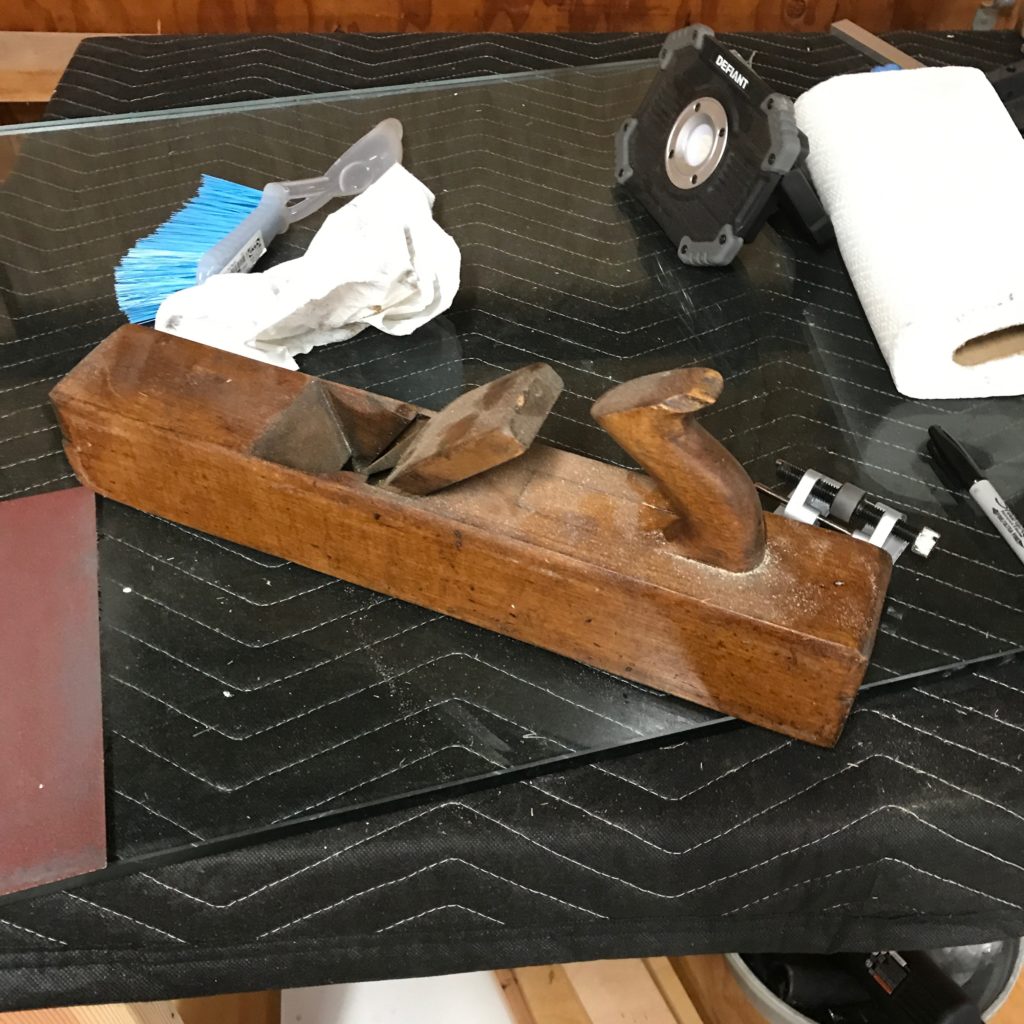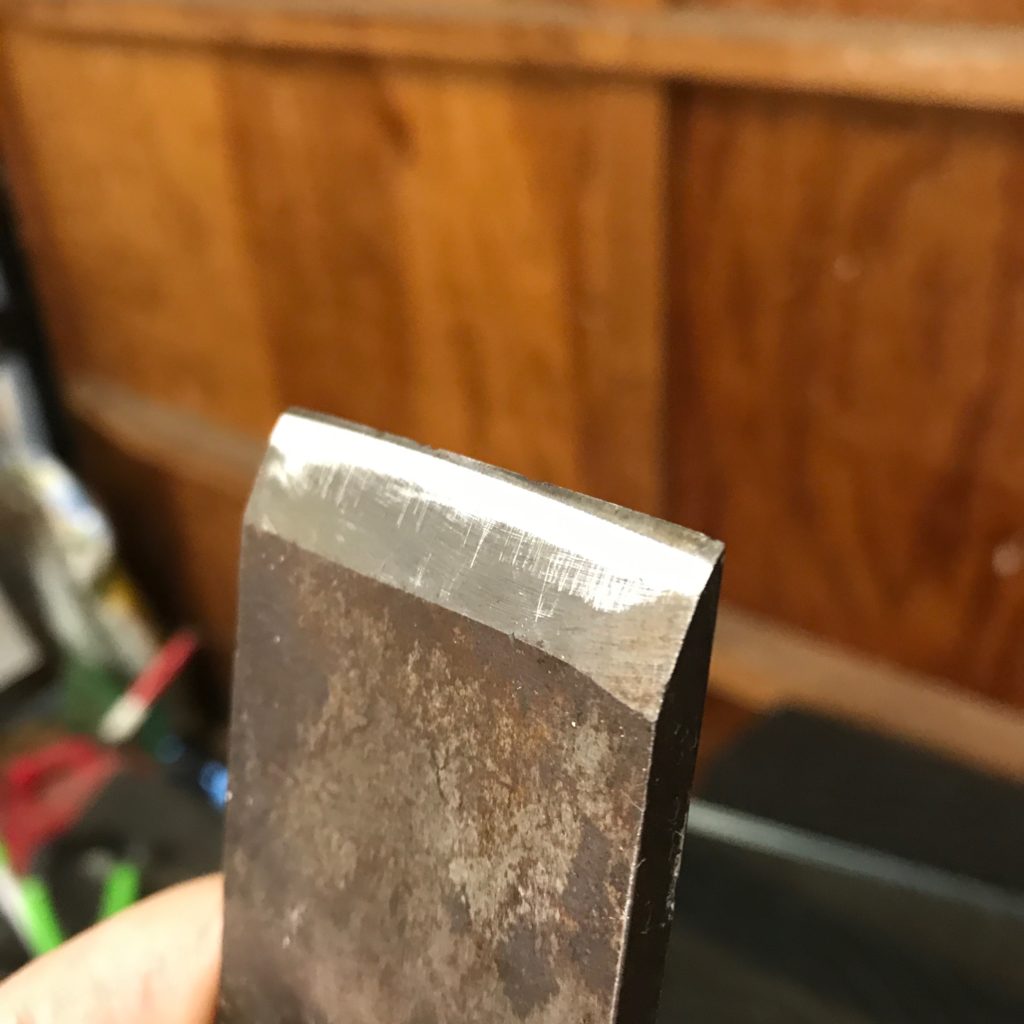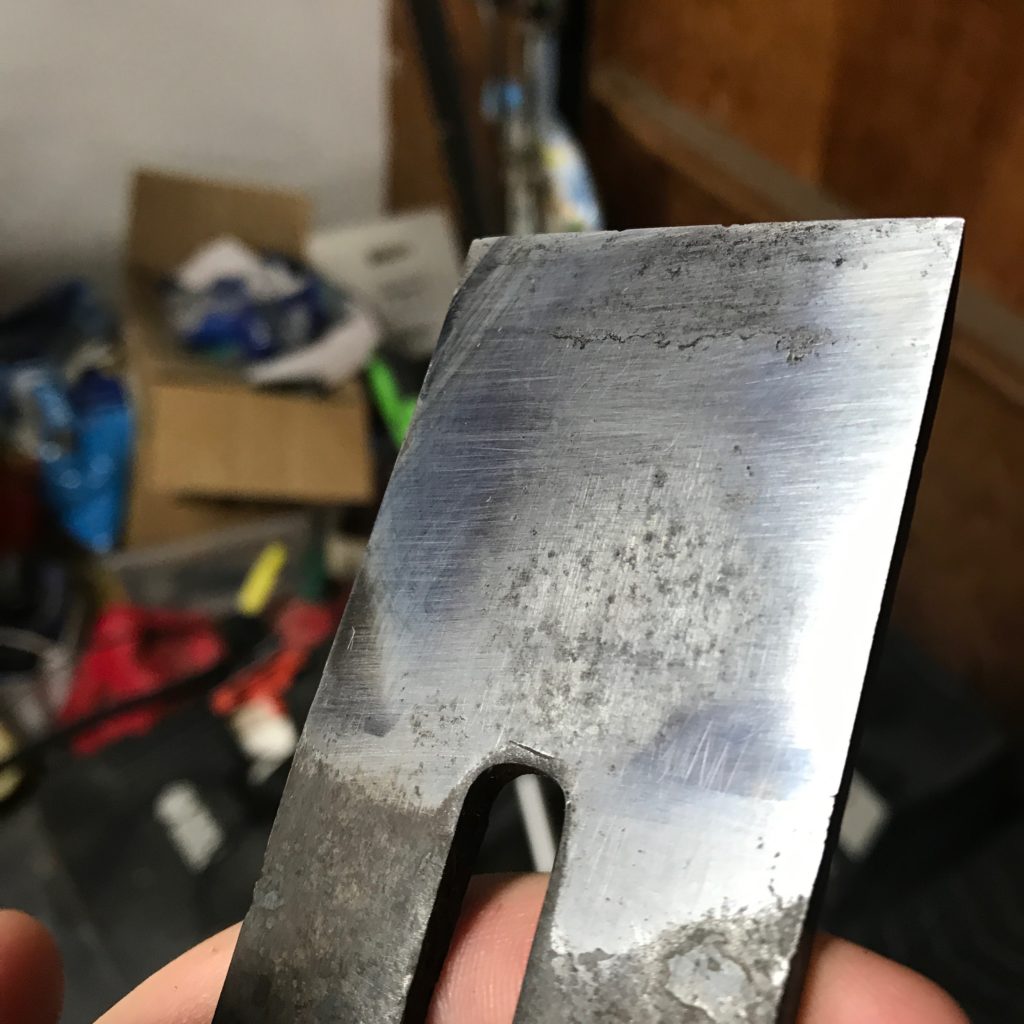30 minutes in the workshop…
So, last night about 9:30PM I decided to spend a little time in my garage workshop. I cleared some items off the top of my rolling workbench and decided to do a short bit of work on two projects.
A couple of days ago I had started making a cross cut sled for my tablesaw. I had cut and glued two oak runners to a piece of 3/4″ ply. Today I trimmed the extra bits off from the board, and smoothed the ends with a bit of work using my belt sander. I took some extra time to rub some paste wax into the bottom, and now it slides easily in the miter slots. I didn’t feel like doing anything more on it, because I want to spend some time to double check my table saw blade for square before making any additional cuts. I have some 3/4″ ply cut to serve as the end fences already, but will need to chop it to length and glue up a double thickness to serve as the rear fence too. Perhaps I’ll get to that this weekend.
But, I didn’t feel like stopping, so I decided to try my hand at sharpening.

Years ago, my wife got me a couple of planes as a gift. She had found these in some antique store and I had mentioned to her that I liked old tools, so she bought them for me (she assures me they were inexpensive). I always thought they were nice objects, but hadn’t either displayed them or converted them into working tools. One was a molding plane that I haven’t got any serious plans for, but the other is an old wooden fore plane, with a 2″ wide iron and about 16.5″ in length that appears to be in pretty good shape.
I thought I might actually try my hand at restoring it to working shape. And I figured the best way to start is to sharpen the tool iron. Inspired by Rex Krueger’s video:
I decided to give it whirl! I had a large 24″ square piece of flat tempered glass, and took a piece of 150 grit sand paper, prayed it with some 3M Super 77 spray adhesive, and glued it to one corner.
Examining the old iron, it looks to me like it hadn’t (perhaps ever) been properly sharpened (he say’s boldly, having literally no experience with it). The back looked like it had never been flattened, and the bevel was rounded and uneven.
A couple of weeks ago I ordered a honing guide from Amazon. The basic idea of this is to hold the iron at a particular angle that you can set by adjusting the amount of the iron that protrudes out the front, and the guide will hold the blade at the proper angle. For a 25 degree bevel, it required a 50mm (or 2″) protrusion. For fun, I decided to give it a try.

A few minutes of work revealed what I thought. The leading edge of the blade was actually much blunter than 25 degrees. It will probably take some work to get back to a single, consistent bevel.
My understanding is that many fore planes actually used a curved or cambered blade. This is because fore-planes were used to make fairly aggressive, overlapping cuts to roughly flatten stock. But there was a significant left to right change, so I thought it probably would be best to try for a simple, flat bevel, and worry about trying to adjust the camber at some later date.
But first, I needed to flatten the back. I took the iron out of the honing guide and set to work. My goal was to get about 1.5″ of the back flat. A few minutes of work revealed that the center of the iron was obviously significantly concave, and pretty rough overall. There was also some general uneven-ness near the the leading edge, and one side looked like it was a a bit rounded relative to the rest of the surface.

I kept at it for about 15 minutes. It rather reminded me of my old days of working grinding telescope mirrors. Careful, even pressure, long strokes, examining your work at intervals.
It still needs a lot of work. While the portions to the left and right are now nice and bright and smooth, the leading edge is still a bit stained and uneven, and you can see a fair amount of concavity still remaining in the center, although it’s much better than when it began. It was getting late though, so this is where I halted for the night.
As I went off to sleep, I started to consider the meta question: how flat was flat enough? And why is having a flat back to the iron important anyway?
Ask questions, and the internet provides the answer. This article from Fine Woodworking provided me some light reading before sleep took me.
Anyway, the time in the garage was quite relaxing. I did decide that I needed to add another LED light strip toward the front side of the garage, because I was basically standing in my own light. Perhaps I’ll get to that this weekend.
Hopefully, my next update will be to let you all see how nice and flat this iron has become, and how I’ve ground a proper bevel. Stay tuned.
I recall burning three or four weeks of a sabbatical getting Saccade.com on the air with Wordpress. So much tweaking…